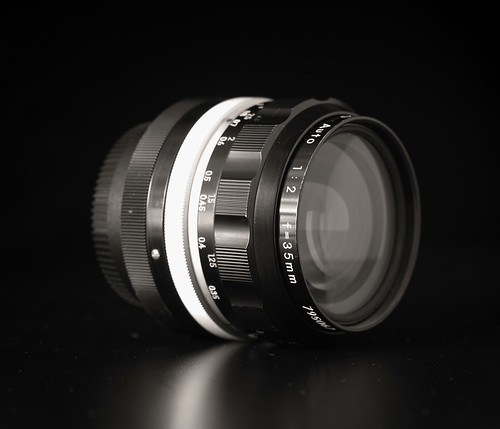After recently reconsidering what turns out to be a brilliant little Nikon Nikkor 24mm f/2.8 Ai, I thought it might be time to have yet another look at my old Nikon Nikkor-O 35mm f/2 single coated optics.

For this look at things, I wanted to confirm the field of this focal length lens is as flat as the newer 24mm Nikkor.
I mounted it up on the Sony A7 using a straight-thru adapter and pointed the lens at a fine-detailed subject. The fine-detailed subject just happened to be our daylight back-lit apartment gaze curtains.
Setup -
- Sony A7 - ISO50, 2 second timer, in-camera levels used to square the whole plot up
- Manfrotto tripod - it's capable of securing an 8x10inch view camera, so it's sturdy enough for this
- Nikon Nikkor-O 35mm f/2 pre-Ai single coated - shot from f/2 through f/8
- Rawtherapee RAW to jpg conversion - Auto-Match function, but nothing further (ie: NO Capture Sharpening)
Comparison -
Here is the scene setup. It's just a pair of closed gaze scrims in our apartment. The details are interestingly small, so therefore useful for this kind of "wee look-see." The center section, upper left corner, and lower right corners were used in the comparison.

[As always, click on the image and look at it to 100percent file size to see whatever there is to be seen.]

Comments -
Borrowing from my Comments on the 24mm Nikkor, nearly everything I saw with that lens can be applied to this Nikkor-O 35mm f/2.
The Center images at f/2 looks a bit soft. Is it the lack of contrast? Or perhaps a bit of spherical aberration? Both, probably, as it's certainly softer and less contrasty than at f/2.8 or anything further south than that.
From f/2 down to f/8, the extreme corners clean up incrementally. The corners are certainly not bad, even at wide open, but the improvement as the lens is stopped down is apparent.
Thinking about this, isn't it remarkable how a lens manufactured in the early 1970's, is single coated, and designed sometime in the 1960's can still look half way decent on modern digital cameras? Standing alone without a reference, the lens looks nice.It makes me wonder what useful gains have been made in optical design between then and now? I'll consider this quesion more fully in a future post.
No comments:
Post a Comment